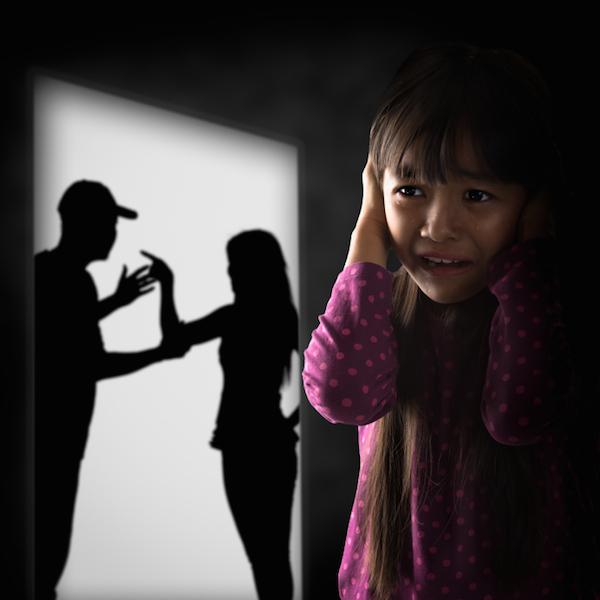Impact Of Domestic Violence On Children
Researchers have shown their concern in studying the associations between exposure of domestic violence and child abuse and their impact on development of children. Researchers have identified that maltreated children and abused women come from the same homes. Recent reviews of studies indicate that co-occurrence of child abuse and spousal abuse is high. Between 30% and 60% of children whose mothers had experienced abuse were themselves likely to be abused. There are nearly 1 million children were identified victims of substantiated abuse and one million women who were physically assaulted within the past 12 months (Weithorn, 2001).
Family is the fundamental unit of child’s socialization. Children learn powerful lessons from their parents including how to resolve conflict and how to cope with having their needs frustrated. Studies suggest that children may fail to learn how to moderate their emotions when they are exposed to their parent’s anger and emotional outbursts (Cummings et al. 1985).
When children witness one parent inflicting abuse on the other or using threats of violence to maintain control within relationship, seeds are planted that may result in the cycle repeating itself.
Straus et al suggests that most batterers have themselves been exposed to their mother’s victimization in childhood. The relationship between women and their children are affected by living with domestic violence and that women are aware that their ability to fulfil the mandates of motherhood are compromised. Women are aware how within the ideology of motherhood and family, they have failed, but they believe that within the acutely constraining context of domestic violence they have protected their children both from extensive knowledge of the violence and from premature loss of their family. Simultaneously children try to protect their mothers from awareness of how much they know and how unhappy they are. The consequent silence means that women are living with the illusion that they are staying for the sake of the children whereas children live with the burden of secretly wishing that their parents would separate.
Hughes et al. found that children who were both abused and exposed to domestic violence exhibited most severe problem behaviours. Gender appears to be another factor that affects the types of problems experienced. In general boys have been shown to exhibit more frequent problems. Abused women are twice as likely to abuse children as non-abused women. However male batterers abuse their children twice as often battered women. Domestic violence increases the risk of physical and sexual abuse to children.
A sizeable no. of studies report association between exposure to domestic violence and current child related problems or later adult problems. Researchers evinced that even when children are not the direct targets of violence in the home, they can be harmed by witnessing the occurrence of such violence. Children who witness domestic violence can suffer severe emotional and developmental difficulties similar to children who are direct victims of abuse. The legal system is beginning to recognize the need to protect and care for these children. Exposure to violence on multiple levels the parents can affect the parent’s behaviour and can compound the effects on children. The literature on family violence identifies adverse effects on children’s physical, cognitive, emotional and social development.
Exposure to domestic violence on lifespan development
Exposure to domestic violence may frequently co-occur with other risk factors such as poverty and its consequences and other types of violence such as child maltreatment and community violence. Sims Hans and Cox found that when fathers were physically violent with mothers, infants were more likely to be insecurely attached to their mothers. Children are affected by violent exposures at all ages. Young children because of their dependence are particularly vulnerable to threats aimed at their mothers, particularly when the source of this threat is another caregiver (father). Studies indicate links between exposure of violence and negative behaviour in children across lifespan development. Women who are abused and beaten during pregnancy clearly suffer an elevated risk of injury to the foetus and complication during pregnancy.
Behavioural and emotional disturbances
Researchers have also identified a host of behavioural, emotional and psychological difficulties associated with exposure to domestic violence. Exposure to parental violence id a form of psychological abuse and how children are affected depends on a range of variables including their age, gender, and presence of extensive support system. Children show the greatest level of adjustment difficulties when their parent’s separation is marked by conflict before, during and after the relationship ends.
Emotional internalizing problems such as anxiety, depression, low self-esteem, withdrawal and lethargy are noted in children who are exposed to family violence. Other children experience somatic complaints such as bodily aches, pains and illness. These symptoms may result because the children have a lot of internal tension with no effective way of addressing the problem, expressing the feeling or seeking help. Internalizing problems along with a need to be perfectly behaved and exaggerated sense of needing to help their mother are common in girls who witness family violence. Children may become aggressive with siblings, peers and teachers. They can be irritable and non-compliant and develop more antisocial behaviour. Their social and school development maybe hampered. They have difficulty in concentrating on school work. Their social development maybe hampered because they are too sad, anxious or preoccupied to participate in social activities. Some children may use aggressive strategies in interpersonal problem solving.
Cognitive and attitudinal problems
Children exposed to domestic violence are more likely to experience difficulties in school and score lower on assessments of verbal, motor, and cognitive skills. Slower cognitive development, lack of conflict resolution skills, limited problem solving skills, pro-violence attitudes, and belief in rigid gender stereotypes and male privilege are other issues.
Long-term problems
Research indicates that males exposed to domestic violence as children are more likely to engage in domestic violence as adults; similarly, females are more likely to be victims (Brown & Bzostek, 2003). Higher levels of adult depression and trauma symptoms also have been found.
Children who witness domestic violence suffer from PTSD including acute fear, helplessness or agitated behaviour. There may be inappropriate attitudes about use of violence in resolving conflicts, inappropriate attitudes about violence against women and hyper sensitivity about problems at home.
How you can help your children
- If your child, or a child you know, tells you that he/she has been abused, your immediate response is very important. Listen carefully and let your child tell you what happened in his/her own time.
- Reassure your child that he/she is not to blame for what happened (or is happening).
- Let your child know he/she is very brave to tell you about it.
- Show your child that you are concerned for him/her.
- Try to stay calm and not let your child see how shocked you are.
- Some mothers and children use silence or denial to try to cope with the abuse. But most children appreciate an opportunity to acknowledge the violence and to talk about what they are feeling. Do talk to your children - and listen to them. Try to be honest about the situation, without frightening them. Reassure them that the violence is not their fault and that they are not responsible for adult behaviour.
- Encourage your children to talk about their wishes and feelings. You could do this perhaps by doing an activity together, or encouraging them to draw or write about what is happening and how they feel about it. Your child's teacher may be able to help you with this. Sometimes children will wait until they feel safe and are no longer in the violent environment before they start to talk about their feelings.
Direct or indirect exposure to domestic violence has adverse consequences on cognitive, motivational and emotional development of children and also a negative impact on behavioural functioning of children. The overall functioning attitudes, social competence and school performance are affected negatively. In addition, as children get older, those who have been abused and neglected are more likely to commit crime and experience emotional problems, sexual problems and alcohol or substance abuse. There is a link between exposure to community violence and symptoms of anxiety, depression and aggressive behaviours as well.
References
Please note: The opinions expressed in this post are the personal views of the author. They do not necessarily reflect the views of mycity4kids. Any omissions or errors are the author's and mycity4kids does not assume any liability or responsibility for them.



